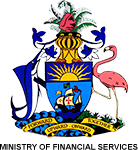Legal requirements to access international markets for products from the creative sector
If you wish to access a foreign market, your products have to meet the requirements of your target market. The exact requirements depend on the type of product and the country or state you are exporting to. Below is a summary of the main legislation you should be aware of.
Product safety
First and foremost, your products must be safe for use. They must also be traceable, so they can easily be removed from the market if necessary. You should clearly inform consumers about any possible risks related to your products.
The main legislation on product safety includes:
- Europe – the General Product Safety Directive (GPSD), ensuring product safety for all consumer products available on the European market
- USA – the Consumer Product Safety Act (CPSA) and Consumer Product Safety Improvement Act (CPSIA), which serve to protect the American public from unsafe consumer products
The following databases of recalls and rejections give you an idea of potential issues with your product type:
- Europe – Safety Gate
- USA – Recall Listing
The USA has a separate law on the flammability of textiles, the Flammable Fabrics Act. European countries regulate this on a national level, for example in the United Kingdom’s Nightwear (Safety) Regulations 1985.
Chemicals and hazardous substances
Another area of legislation to protect consumers is the restriction of certain chemicals and other hazardous substances. This legislation differs considerably per target market.
Key laws on chemicals and other hazardous substances include:
- Europe – the Registration, Evaluation, Authorisation and Restriction of Chemicals (REACH) Regulation, restricting the use of various chemicals like azo dyes, cadmium and creosote
- USA – the Federal Hazardous Substances Act (FHSA), which requires precautionary labeling on hazardous products and enables a ban on products if necessary
Labeling
Your target market may have specific legislation on product labeling. Product labels should provide clear information on for example the manufacturer, material, net quantity and the actual product. Especially textile product labeling is strictly regulated.
Important labeling legislation includes:
- Europe – the Textile Regulation for textile product labels
- USA – the Fair Packaging and Labeling Act, including specific rules for clothing and textiles
Wooden products
The Convention on International Trade in Endangered Species of Wild Fauna and Flora (CITES) is an international agreement between governments, regulating the trade in wild animals and plants. This includes wooden products, like furniture or decorative items.
Compliance with CITES is regulated via:
- Europe – the Timber Regulation
- USA – the Animal and Plant Health Inspection Service (APHIS)
For a detailed overview of requirements related to exporting wooden furniture, see:
- Europe – CBI’s Buyer Requirements for Home Decoration and Home Textiles
- USA – the Guide to United States Furniture Compliance Requirements, including state-specific regulations

